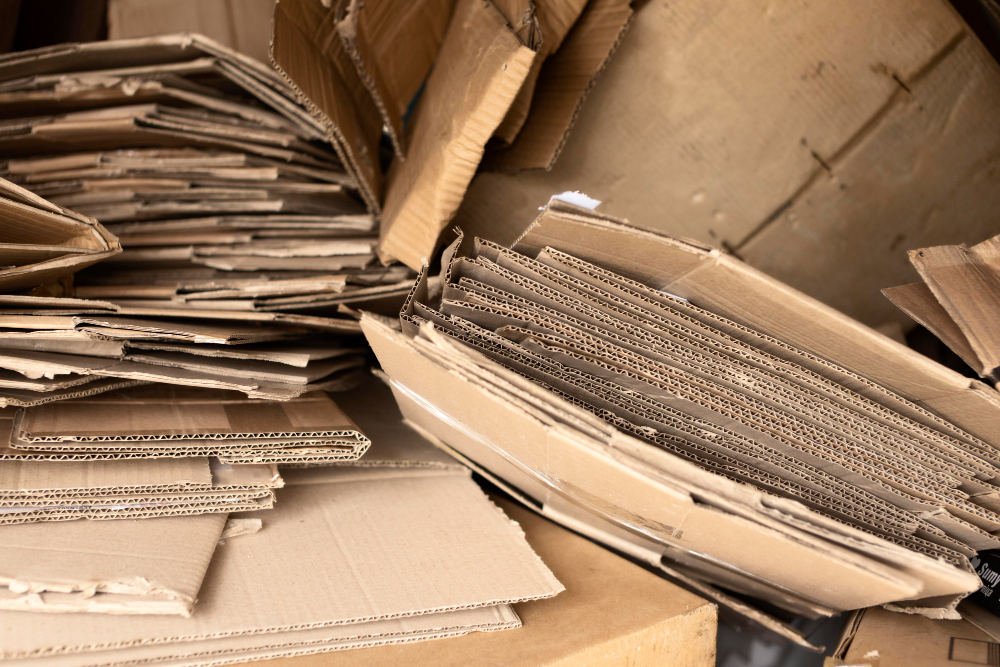
Cardboard is an essential material in our lives, used for packaging, shipping, and storing items. However, not all cardboard is created equal. Understanding the different types of cardboard and how to recycle them effectively can contribute to a more sustainable environment. This blog post aims to provide a comprehensive guide on the types of cardboard, their uses, and the benefits of recycling. If you're looking for efficient cardboard recycling in New Jersey, consider reaching out to All County Recycling for a free consultation.
Before we explore the recycling process, it's crucial to identify the various types of cardboard commonly found in households and businesses.
Corrugated cardboard is the most widely recognized type. It consists of three layers—a fluted or wavy middle layer sandwiched between two flat liner boards. This structure gives it strength and durability, making it perfect for shipping boxes. This type of cardboard is usually used in packaging and transporting goods.
Paperboard, also known as chipboard, is a thinner, single-layer board often used for lighter packaging tasks. It's the material behind cereal boxes, tissue boxes, and other household packaging. While less sturdy than corrugated cardboard, it still serves a variety of packaging purposes.
Wax-coated cardboard has a layer of wax applied to make it moisture-resistant. This is often used for shipping produce or products that require refrigeration. Due to the wax coating, this type of cardboard can be more challenging to recycle.
Gray paperboard is made from recycled newspapers and is typically found in the bottom of shoe boxes or as the backing of writing pads. It is less durable and often requires special handling during the recycling process.
Dual-use cardboard is often employed in non-traditional applications, such as furniture or art projects. Due to its varied use, it may include additional materials like adhesives or fabrics, complicating the recycling process.
Recycling cardboard offers numerous environmental benefits, including reducing landfill waste, conserving resources, and minimizing pollution. Here's a closer look at why it's essential:
Cardboard occupies a significant portion of landfill space. By recycling, we can significantly reduce the amount of waste sent to landfills, extending their lifespan and reducing the need for new landfills.
Producing cardboard from recycled materials requires fewer raw materials, such as trees and water, conserving these precious resources. For every ton of recycled cardboard, approximately 9 cubic yards of landfill space is saved and 17 trees are spared.
Recycling cardboard consumes less energy compared to manufacturing new cardboard from virgin materials. This energy savings translates into reduced greenhouse gas emissions, which contribute to climate change.
By recycling cardboard, we support a circular economy where materials are kept in use for as long as possible. This approach reduces the strain on natural resources and creates a sustainable cycle of use and reuse.
While the benefits of cardboard recycling are clear, there are also challenges to consider:
Contaminants like food residues, grease, or other materials can hinder the recycling process. It's essential to ensure that cardboard is clean and free from contaminants before recycling.
Different types of cardboard may require sorting, as they can have varying recycling processes due to coatings or additional materials. Proper sorting ensures that each type of cardboard is processed correctly.
Wax-coated cardboard poses a unique challenge, as the wax can interfere with the recycling process. Fortunately, some facilities are equipped to handle this type of cardboard, so it's crucial to check with your local recycler.
New Jersey residents looking to recycle cardboard have several options, with All County Recycling offering specialized services to assist with the process. Here's how you can make a difference:
Many municipalities in New Jersey provide curbside recycling programs that accept cardboard. Residents should check with their local waste management authority for specific guidelines on how to prepare cardboard for recycling.
For those without curbside options, drop-off centers are available throughout New Jersey. These centers accept cardboard and other recyclable materials, ensuring they are properly sorted and processed.
All County Recycling provides a valuable service for businesses and residents seeking to optimize their recycling efforts. With a focus on sustainability and customer satisfaction, All County Recycling offers:
Cardboard recycling in New Jersey is more than just an eco-friendly practice—it's a necessity for a sustainable future. By understanding the types of cardboard and their recycling processes, individuals and businesses can contribute to a cleaner environment. For those in New Jersey, All County Recycling stands ready to help you achieve your recycling goals with expert consultation and customized solutions. Don't hesitate to reach out for a free consultation and take the first step towards responsible cardboard recycling today.